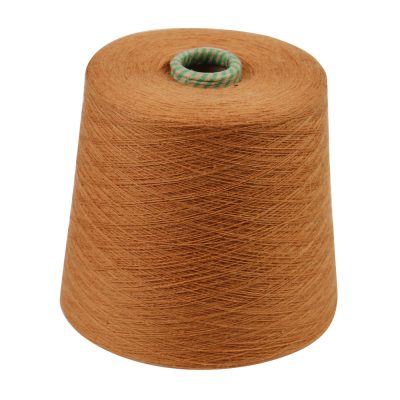In order to make the yarn have a certain strength, elasticity, elongation, luster, hand feeling and other physical and mechanical properties of the yarn, the cotton yarn must be changed by twisting, and the yarn twisting is realized by the fiber structure. In fact, it is produced between the cross-sections of the cotton yarn. The relative angular displacement makes the original straight and parallel fiber and the yarn axis tilt to change the yarn structure. During the twisting process, the thick strip gradually shrinks from its width, and the two sides gradually fold into the center of the yarn strip to form a twisted triangle. , In the twisted triangle, the width and cross-section of the sliver change, from a flat ribbon to a cylindrical yarn.
(1) The definition of twisting: the yarn rotates 360 degrees around its axis, which is a twisting.
(2) Definition of twist: The number of twists in the specified length of the yarn before untwisting, usually expressed as the number of twists per inch (T.P.I) or the number of twists per meter (T.P.M ).
(3) Definition of twist coefficient: it is a measure of the degree of twisting of a yarn, based on the twist per unit length. T. M: Calculated by multiplying the number by the square root of yarn density. T.M = T.P.I / square root of yarn count T.P.I = T.M x square root of yarn count
(4) Twisting direction definition: when the yarn sliver is in the vertical position, the inclination direction of the spiral formed by the unit that makes up the yarn sliver rotates around the axis of the yarn.
(5) S twist definition: the inclination direction of the fiber in the yarn sliver is consistent with the middle of the letter S. It is the right-hand direction or the clockwise direction of the twist back yarn.
Strong twisted yarn is mainly used for weaving weft yarns, which can produce a unique style of wrinkling on the cloth surface.
Due to the above unique effects, the strong twisted yarn as a special yarn has always occupied a place in the yarn market. The production of strong twisted yarn can be organized without improving equipment and adding accessories, and the technical content and added value of the product are relatively high. However, the production of strong twisted yarn is difficult and the product quality is difficult to control. The manufacturer must have certain technical capabilities and management experience.
























